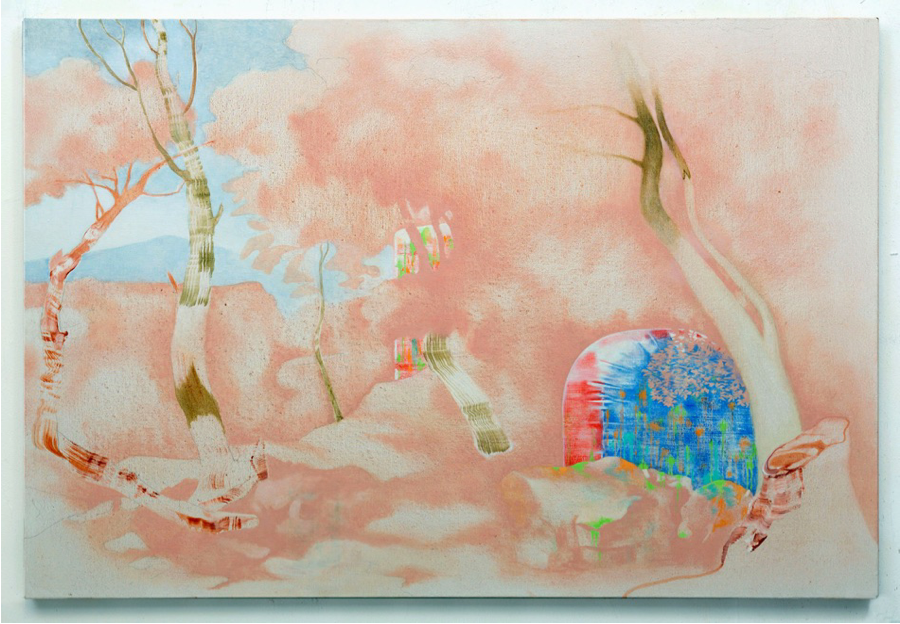Our features this week are many and here we have artist Simon Willems
BIO - Simon Willems is a London-based artist and British Academy Post-Doctoral Fellow at the University of Reading. He has shown extensively in solo and group exhibitions throughout Europe, North America and Asia over the last twenty years.
1 - Could you explain your practice? Only you know why you do what you do.
Explain my practice. Well, my practice revolves largely around painting (apart from making lanyards and putting shows together occasionally), and while I don’t see myself as a ‘figurative’ painter, I draw on imagery, that is, particular archives of imagery, which I appropriate and reframe. These can come from anywhere: art history, the internet, popular culture, everyday experiences, work-related contexts, walking down the street, whatever; sometimes emerging as one-off pieces, sometimes as bodies of work. Sometimes in direct response to political questions, sometimes not. It’s an open process, one that takes time, and I often stew over motifs for years, sometimes looping back to earlier investigations when I’m well underway elsewhere with other developments. What remains constant, however – both at the level of medium and motif – is an interest in the irreconcilable and how forces pulling in opposite directions can be thematised. More recently this has manifested itself in an ongoing series of paintings that feature images of corporate team-building activities taking place in hermit landscapes from art history. Evolving out of my interest in ‘structured fun’ and the coercive use of it by human resource management in organisations, this was preceded by other work that explored the figure of the hermit as a symbol of performance. The theme of opposition has always been central to what I do and I remember likening it, in my application to the Royal College of Art, to the metaphor of the Levi-Strauss Jeans logo, you know, the one of two horses pulling in opposite directions to identify the strength of the denim. That was a long time ago but it still resonates strongly with me now. It also goes to the heart of painting, or at least my painting, in the tension between image and object. The materiality of paint is very important to me and I always feel a little uncomfortable and disappointed if image is championed too readily in my work. Ambiguity is king. The beauty of painting lies in its slowness, its difficulty, its contradictions, as countless people have talked about elsewhere.
2 - Is art relevant today?
Art is always relevant. Yesterday, today, tomorrow: always
3 – We are always asked what other artists influence us, we want to know what art you don’t like and which influences you?
Do you mean which artists don’t I like which, at the same time, still influence me…is that what you mean? Well, there are those artists that I have a difficult relationship with who still influence me. Sure. Artists such as Peter Doig and Luc Tuymans, for example, for completely different reasons, spring to mind…but I guess they’re leading figures in the canon so that’s not so surprising. The same could be said of Manet, I guess. He’s not always easy. Sometimes, it’s not a straightforward question of whether one likes the work or not, when different aspects of it raise different questions. Then there are those artists whose work, for one reason or another, I simply don’t like, but I’m not going there. Sorry. Beyond that, more broadly, at least as it relates to painting, I’ve never taken to certain kinds of photorealism, which is not so surprising given my response to Question 1 - much as my work draws on the photographic in various ways. I’m not talking so much about Richter, Celmins or the Sixties photorealists like Robert Bechtle. They’re great. And I very much enjoy contemporary photorealists with a conceptual purchase on what they do; artists such as Alan Michael, Lucy Mckenzie or Paulina Olowska, for example. I’m thinking more of the quick-hit graphic photorealism of a lot of painting now that relies too swiftly on effects, like Photoshop filters and so on, without thinking about the photographic and the digital as subject matter in its own right, that is, with more nuance. Beyond that, if I think about what I have issues with, there seems to be a rather dull lineage of derivative painting caught somewhere between the influence of Michaël Borremans and Victor Man, particularly here in the UK – much as I love the work of those two – that doesn’t really do it for me, although I’m sure it’s filtered into my efforts at the studio at some point.
4- If you could go back 10-20 years what would you tell your younger self?
Calm down
5 – If you could go forward 10-20 years what do you hope to have done or not done?
That’s a tricky one. I don’t really think like that. Hmm. God knows.
'Burnout (after Landscape with Saint Paul the Hermit by Nicolas Poussin 1637-1638) - 2018


